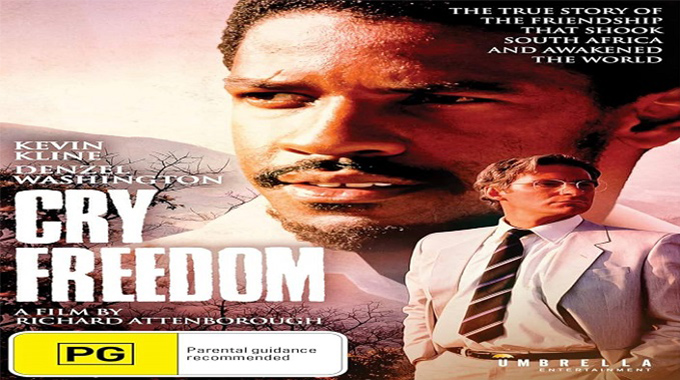Remembering the purple patch in Zimbabwe’s film sector

Raisedon Baya, [email protected]
In 1980, Zimbabwe achieved its pivotal independence, ushering in a wave of dreams and aspirations. Among these aspirations was the pursuit of economic development through the medium of film.
The fledgling Government swiftly recognised the potential of harnessing film as a tool for job creation and crafting a compelling narrative of a peaceful, stable and picturesque nation ripe for investment and prosperity. The Government promptly embarked on efforts to entice major Hollywood studios and other film investors to choose Zimbabwe as a prime location for their productions.
The aim was to not only attract significant investment into the Zimbabwean economy but also to generate employment opportunities for local filmmakers. This strategic move aimed to solidify Zimbabwe’s position as the premier filming destination in Africa, thereby bolstering its image as an ideal location for cinematic endeavours.

A scene from “A far off place” film shot in Zimbabwe
This strategy yielded results in the late 1980s and early 1990s, marked by a noticeable influx of foreign films being shot within the country’s borders.
During this period, filmmakers from the USA, Canada, France Belgium and many other countries flocked to Zimbabwe, bringing with them a host of Hollywood stars. Notable names such as Morgan Freeman, Stephen Dorff, Sharon Stone, Susan Sarandon, Denzel Washington, Marlon Brando, Donald Sutherland, and many others graced the Zimbabwean landscape with their presence.
This era witnessed the production of iconic films like King Solomon’s Mines, A Dry White Season, Cry Freedom, Bopha, A World Apart, African Journey, A Far-Off Place, Diamonds, Under the Sun, Kini and Adams, Lumumba and many more, each capturing the diverse and picturesque locations of Zimbabwe.
The primary beneficiaries of this influx were undoubtedly local artistes who secured roles both on screen and behind the scenes. Through these opportunities, they gained invaluable experience, enabling many to continue pursuing significant film projects long after the departure of the foreign productions.
The country itself benefited in terms of image and international relationships as it grew its reputation as a place of beautiful natural locations, peace and stability. (Almost like what South Africa is doing at the moment.)
Certainly, the flourishing period in the film sector was not solely attributable to the Government’s deliberate efforts to attract foreign filmmakers as several other factors contributed to this success. First, the country boasted one of the biggest film laboratories in Southern Africa, if not the whole of Africa.
The Central Film Laboratory, established under Ian Smith’s government, was a comprehensive facility equipped to handle 16mm and 35mm film printing and processing in both colour and black and white. It also offered sound engineering services, making it a fully-fledged resource for film production needs.
Another significant factor was the geopolitical context of the time. While South Africa was still under apartheid and facing international isolation, there was a growing global interest in telling apartheid-related stories through film.
This created a unique opportunity for Zimbabwe to offer its resources and locations as alternatives for filmmakers seeking to depict the realities of apartheid-era South Africa. South Africa’s isolation from the international community during this period greatly benefited Zimbabwe as filmmakers turned to the country as an alternative filming location. This is why, when South Africa gained independence, the filmmakers changed their destination and the opportunities dried up for Zimbabwe.
Certainly, with strong political will and a clear policy direction, attracting foreigners to film in Zimbabwe was made considerably easier. The Government’s proactive approach likely streamlined the processes involved, although companies still had to adhere to proper procedures and protocols. This centralised co-ordination ensured that filming activities proceeded efficiently while maintaining necessary regulatory standards.
 Even amid their prominence, these filmmakers still had to undergo accreditation processes. They were required to obtain police permission, local authority approval and national parks authorisation. Additionally, their equipment had to undergo clearance procedures to ensure compliance with regulations.
Even amid their prominence, these filmmakers still had to undergo accreditation processes. They were required to obtain police permission, local authority approval and national parks authorisation. Additionally, their equipment had to undergo clearance procedures to ensure compliance with regulations.
The only drawback was the lack of local expertise in the film industry. With only a handful of locals possessing substantial knowledge about filmmaking, many found themselves vulnerable to exploitation and unfair treatment.
Stephen Chigorimbo, one of the veterans of the sector had this to say about that time.
“It was not as easy as many think. It was tougher. During the early 80s, there were hardly any locals knowledgeable enough to work behind the cameras as crew. And this led to a lot of exploitation. Actors and crew worked for peanuts.
The so-called “film fixers” and foreign film companies took advantage of our situation and ran slave plantations in our backyards.”
Also intriguing is that Zimbabwe did not just invite foreigners to invest in the country; it also showed a willingness to invest in certain film projects itself. This proactive approach not only attracted external filmmakers but also demonstrated the Government’s commitment to nurturing the local film sector and supporting its growth.
This was evidenced by its investment of $5,5 million in the film Cry Freedom. The hope with this investment was that the film would do well worldwide in terms of box office. This was an experiment that unfortunately did not yield desired results. The film made a loss — a stinging one that left the Government with burnt fingers. After this experience, Government was unwilling to further invest in film. And gradually, a policy shift commenced, leading to the neglect of the film sector, causing it to sink to the bottom of the sea.
Although Cry Freedom was a box office flop, some known positives happened because of it. For example, the film took about six actors from Amakhosi Theatre and trained them as stunt people. These included the likes of Pedzisai Sithole, Victor Simbule, Ronald Matamba, Simbarashe Mugadza and others. Following their training, these six individuals found themselves securing roles in numerous movies being filmed within the country. Pedzisai Sithole was particularly fortunate, landing a leading role in a Canadian series titled African Journey.
John Riber, serving as the assistant camera person on that film, had the opportunity to witness first-hand the acting talents of Pedzai Sithole. Impressed by Sithole’s performance, Riber later cast him in his local production, Yellow Card, several years later.
Of Cry Freedom, another veteran artiste, Styx Mhlanga says,“I recall my initial experience with an international film shoot vividly. It was in August 1986 when I was a recruit at the Iluba Elimnyama Experimental Workshop, alongside notable colleagues such as Memory Kumbota and Patrick Mabhena. We were invited to go and try our luck with Cry Freedom. Little did I know we were going to spend the whole day sitting on a hill in Lobengula township as mere extras. We were treated like a bunch of goats while some local guys who had landed speaking roles were treated like stars.”
The experience might have been sour for Styx Mhlanga but certainly it was different for his brother the late Cont Mhlanga when World Apart was shot in the country. Cont was a third assistant director and Styx recalls the production hiring a fancy car for him and paying him “good enough” for him to buy the family’s television set.
The impact of these foreign films on the local scene cannot be overstated. They served as a source of inspiration for an entire generation of filmmakers, including luminaries like Cont Mhlanga, Isaac Mabhikwa, John Riber, Godwin Mawuru, Priscilla Sithole and many others. This purple patch is what we look at and say to ourselves, the potential is there and we need to try doing it again. At least one more time.











Comments